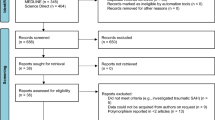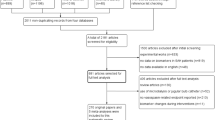Abstract
High mortality following aneurysmal subarachnoid hemorrhage (aSAH) occurs in the early phase, but the underlying mechanism of early brain injury (EBI) in aSAH was less elucidated. In this study, we aimed to investigate the association of apolipoprotein E (APOE) genotypes and early cerebral perfusion after aSAH. We collected venous blood of aSAH patients on admission for APOE genotype identification, applying computed tomography perfusion (CTP) scanning within 24 h after onset. The CTP parameters between patients with different APOE genotypes were compared. Then, a positive item was chosen for separate uni- and multivariate logistic regression analyses to seek its risk factors. Our results showed mean transit time (MTT) rather than other parameters was significantly longer in patients with the APOEε4 allele, compared to those without APOEε4 (6.45 ± 1.17 versus 5.83 ± 0.84 s, P = 0.019). APOEε4 acted as an independent risk factor for MTT prolongation (>5.9 s) in uni- (P = 0.031, OR = 3.960, 95 % CI = 1.131–13.863) and multivariate (P = 0.019, OR = 9.822, 95 % CI = 1.458–66.193) logistic regression analyses, respectively. APOEε4 may induce cerebral perfusion impairment in the early phase, contributing to EBI following aSAH, and assessment of APOE genotypes could serve as a useful tool in the prognostic evaluation and therapeutic management of aSAH.
Similar content being viewed by others
References
Hop JW, Rinkel GJ, Algra A, et al. Case-fatality rates and functional outcome after subarachnoid hemorrhage: a systematic review. Stroke. 1997;28(3):660–4.
Stegmayr B, Eriksson M, Asplund K. Declining mortality from subarachnoid hemorrhage: changes in incidence and case fatality from 1985 through 2000. Stroke. 2004;35(9):2059–63.
Al-Tamimi YZ, Orsi NM, Quinn AC, et al. A review of delayed ischemic neurologic deficit following aneurysmal subarachnoid hemorrhage: historical overview, current treatment, and pathophysiology. World Neurosurg. 2010;73(6):654–67.
Frontera JA, Fernandez A, Schmidt JM, et al. Defining vasospasm after subarachnoid hemorrhage: what is the most clinically relevant definition? Stroke. 2009;40(6):1963–8.
Vergouwen MD, Vermeulen M, van Gijn J, et al. Definition of delayed cerebral ischemia after aneurysmal subarachnoid hemorrhage as an outcome event in clinical trials and observational studies: proposal of a multidisciplinary research group. Stroke. 2010;41(10):2391–5.
Broderick JP, Brott TG, Duldner JE, et al. Initial and recurrent bleeding are the major causes of death following subarachnoid hemorrhage. Stroke. 1994;25(7):1342–7.
King Jr JT. Epidemiology of aneurysmal subarachnoid hemorrhage. Neuroimaging Clin N Am. 1997;7(4):659–68.
Caner B, Hou J, Altay O, et al. Transition of research focus from vasospasm to early brain injury after subarachnoid hemorrhage. J Neurochem. 2012;123 Suppl 2:12–21.
Sarrafzadeh AS, Sakowitz OW, Kiening KL, et al. Bedside microdialysis: a tool to monitor cerebral metabolism in subarachnoid hemorrhage patients? Crit Care Med. 2002;30(5):1062–70.
Horsburgh K, McCulloch J, Nilsen M, et al. Intraventricular infusion of apolipoprotein E ameliorates acute neuronal damage after global cerebral ischemia in mice. J Cereb Blood Flow Metab. 2000;20(3):458–62.
Lynch JR, Pineda JA, Morgan D, et al. Apolipoprotein E affects the central nervous system response to injury and the development of cerebral edema. Ann Neurol. 2002;51(1):113–7.
Corder EH, Saunders AM, Strittmatter WJ, et al. Gene dose of apolipoprotein E type 4 allele and the risk of Alzheimer’s disease in late onset families. Science. 1993;261(5123):921–3.
Teasdale GM, Nicoll JA, Murray G, et al. Association of apolipoprotein E polymorphism with outcome after head injury. Lancet. 1997;350(9084):1069–71.
Alfieri A, Unterhuber V, Pircher M, et al. Psychosocial and neurocognitive performance after spontaneous nonaneurysmal subarachnoid hemorrhage related to the APOE-epsilon4 genotype: a prospective 5-year follow-up study. J Neurosurg. 2008;109(6):1019–26.
Gallek MJ, Conley YP, Sherwood PR, et al. APOE genotype and functional outcome following aneurysmal subarachnoid hemorrhage. Biol Res Nurs. 2009;10(3):205–12.
Lanterna LA, Ruigrok Y, Alexander S, et al. Meta-analysis of APOE genotype and subarachnoid hemorrhage: clinical outcome and delayed ischemia. Neurology. 2007;69(8):766–75.
Gao J, Wang H, Sheng H, et al. A novel apoE-derived therapeutic reduces vasospasm and improves outcome in a murine model of subarachnoid hemorrhage. Neurocrit Care. 2006;4(1):25–31.
Wu HT, Zhang XD, Su H, et al. Association of apolipoprotein E polymorphisms with cerebral vasospasm after spontaneous subarachnoid hemorrhage. Acta Neurochir Suppl. 2011;110(Pt1):141–4.
Lagares A, Cicuendez M, Ramos A, et al. Acute perfusion changes after spontaneous SAH: a perfusion CT study. Acta Neurochir (Wien). 2012;154(3):405–11. discussion 411–402.
Wu HT, Ruan J, Zhang XD, et al. Association of promoter polymorphism of apolipoprotein E gene with cerebral vasospasm after spontaneous SAH. Brain Res. 2010;1362:112–6.
Westermaier T, Jauss A, Eriskat J, et al. Time-course of cerebral perfusion and tissue oxygenation in the first 6 h after experimental subarachnoid hemorrhage in rats. J Cereb Blood Flow Metab. 2009;29(4):771–9.
Westermaier T, Jauss A, Eriskat J, et al. The temporal profile of cerebral blood flow and tissue metabolites indicates sustained metabolic depression after experimental subarachnoid hemorrhage in rats. Neurosurgery. 2011;68(1):223–9. discussion 229–230.
Sarrafzadeh AS, Haux D, Ludemann L, et al. Cerebral ischemia in aneurysmal subarachnoid hemorrhage: a correlative microdialysis-PET study. Stroke. 2004;35(3):638–43.
Sarrafzadeh AS, Nagel A, Czabanka M, et al. Imaging of hypoxic-ischemic penumbra with (18)F-fluoromisonidazole PET/CT and measurement of related cerebral metabolism in aneurysmal subarachnoid hemorrhage. J Cereb Blood Flow. 2010;30(1):36–45.
Gambardella G, De Blasi F, Caruso G, et al. Intracranial pressure, cerebral perfusion pressure, and SPECT in the management of patients with SAH Hunt and Hess grades I-II. Acta Neurochir Suppl. 1998;71:215–8.
Miranda P, Lagares A, Alen J, et al. Early transcranial Doppler after subarachnoid hemorrhage: clinical and radiological correlations. Surg Neurol. 2006;65(3):247–52. discussion 252.
Sanelli PC, Jou A, Gold R, et al. Using CT perfusion during the early baseline period in aneurysmal subarachnoid hemorrhage to assess for development of vasospasm. Neuroradiology. 2011;53(6):425–34.
Tsuang FY, Chen JY, Lee CW, et al. Risk profile of patients with poor-grade aneurysmal subarachnoid hemorrhage using early perfusion computed tomography. World Neurosurg. 2012;78(5):455–61.
Schubert GA, Seiz M, Hegewald AA, et al. Acute hypoperfusion immediately after subarachnoid hemorrhage: a xenon contrast-enhanced CT study. J Neurotrauma. 2009;26(12):2225–31.
Chai WN, Sun XC, Lv FJ, et al. Clinical study of changes of cerebral microcirculation in cerebral vasospasm after SAH. Acta Neurochir Suppl. 2011;110(Pt1):225–8.
Dankbaar JW, de Rooij NK, Velthuis BK, et al. Diagnosing delayed cerebral ischemia with different CT modalities in patients with subarachnoid hemorrhage with clinical deterioration. Stroke. 2009;40(11):3493–8.
Sviri GE, Britz GW, Lewis DH, et al. Dynamic perfusion computed tomography in the diagnosis of cerebral vasospasm. Neurosurgery. 2006;59(2):319–25. discussion 319–325.
Kamp MA, Heiroth HJ, Beseoglu K, et al. Early CT perfusion measurement after aneurysmal subarachnoid hemorrhage: a screening method to predict outcome? Acta Neurochir Suppl. 2012;14:329–32.
Etminan N, Beseoglu K, Heiroth HJ, et al. Early perfusion computerized tomography imaging as a radiographic surrogate for delayed cerebral ischemia and functional outcome after subarachnoid hemorrhage. Stroke. 2013;44(5):1260–6.
Lanterna LA, Rigoldi M, Tredici G, et al. APOE influences vasospasm and cognition of noncomatose patients with subarachnoid hemorrhage. Neurology. 2005;64(7):1238–44.
Lin B, Dan W, Jiang L, et al. Association of APOE polymorphism with the change of brain function in the early stage of aneurysmal subarachnoid hemorrhage. Acta Neurochir Suppl. 2011;110(Pt1):39–42.
Kay A, Petzold A, Kerr M, et al. Decreased cerebrospinal fluid apolipoprotein E after subarachnoid hemorrhage: correlation with injury severity and clinical outcome. Stroke. 2003;34(3):637–42.
Compliance with Ethics Guidelines
Funding
This study was funded by a grant from the Guizhou Science and Technology Department (2013, 2332).
Author information
Authors and Affiliations
Corresponding author
Ethics declarations
Ethical Approval
The study was approved by the ethics committee of the coordinating institution and has therefore been performed in accordance with the ethical standards laid down in the 1964 Declaration of Helsinki and its later amendments. All the patients gave their informed consent prior to their inclusion in the study.
Conflict of Interest
The authors declare that they have no competing interests.
Rights and permissions
About this article
Cite this article
Cheng, C., Jiang, L., Yang, Y. et al. Effect of APOE Gene Polymorphism on Early Cerebral Perfusion After Aneurysmal Subarachnoid Hemorrhage. Transl. Stroke Res. 6, 446–450 (2015). https://doi.org/10.1007/s12975-015-0426-6
Received:
Revised:
Accepted:
Published:
Issue Date:
DOI: https://doi.org/10.1007/s12975-015-0426-6




